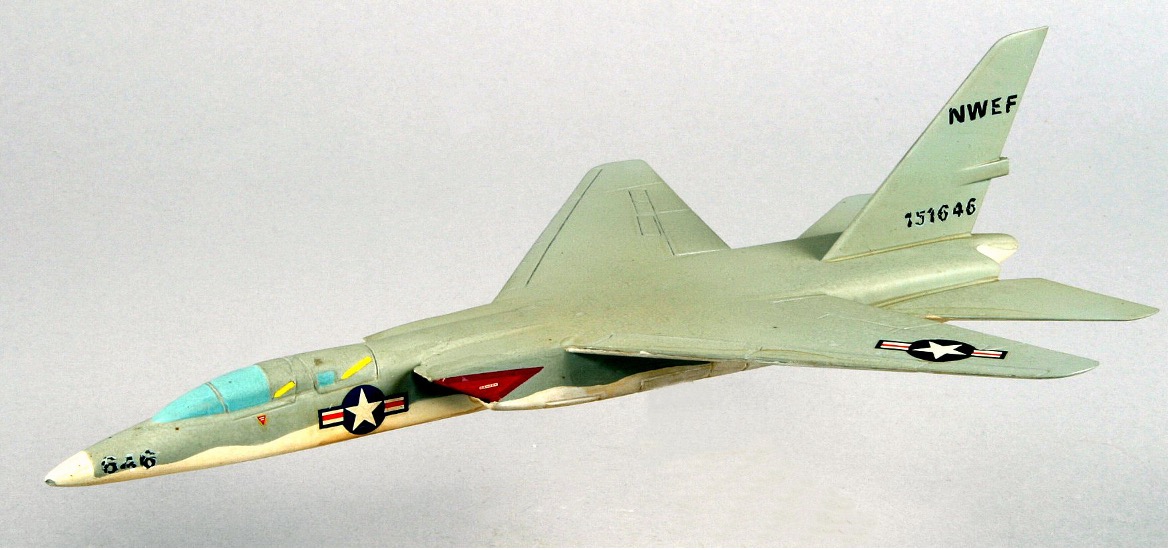USN NWEF North American A-5/A3J Vigilante

MODEL BY:
D. Evans
Model Scale:
1/72
MODEL ADDED:
N/A
historical significance
First Albuquerque Visit: 1951
Additional Information:
The North American A-5 Vigilante is an American carrier-based supersonic bomber built for the United States Navy. Before the 1962 unification of Navy and Air Force designations, it was designated A3J.
Development of the A-5 had started in 1954 as a private venture by North American Aviation in the attempt to produce a capable supersonic long-distance bomber as a successor to the abortive North American XA2J Super Savage. The A-5 was a large and complex aircraft that incorporated several innovative features such as a digital computer, the ability to attain speeds of up to Mach 2 while carrying a nuclear payload. The US Navy saw the value of such a bomber which led to a contract for its full development and production on 29 August 1956. The A-5 performed its first flight just over two years later on 31 August 1958.
The Vigilante was introduced by the US Navy during June of 1961. It succeeded the Douglas A-3 Skywarrior as the Navy’s primary nuclear strike aircraft, but its service in this capacity was relatively brief due to the phase out of manned bombers as part of the American nuclear strategy.
Albuquerque’s Kirtland Field was designated Kirtland Air Force Base in 1947, and the Armed Forces Special Weapons Project (AFSWP) operated on Sandia Base. When the United States Air Force established the Air Force Special Weapons Command at Kirtland Air Force Base in 1949, the United States Navy formed a detachment to investigate nuclear capabilities for naval aircraft and assist the AFSWP with naval equipment for demonstrations and training. The Naval Weapons Evaluation Facility (NWEF) operated through the Cold War investigating aircraft-weapon interfaces to provide United States Navy aircraft with nuclear weapons delivery capability.
In 1952 this detachment was designated the Naval Air Special Weapons Facility (NASWF) to conduct special weapons tests on the White Sands Missile Range and Tonopah Test Range in coordination with the United States Atomic Energy Commission. In March of 1961, the NASWF was re-designated the Naval Weapons Evaluation Facility (NWEF) and its mission was expanded to include safety studies on nuclear weapons. The aircraft used for NWEF testing were decorated with the NWEF thunderbird symbol and the NWEF detachment became known as the Rio Grande Navy by its sailors and civilians.
In 1992, with the consolidation of many naval activities and the drawdown of the U.S. defense budget, NWEF became part of the large, multisite Naval Air Warfare Center Weapons Division in China Lake. In 1993 the NWEF was decommissioned and became the first nuclear-weapons-related facility in the Free World to be shut down. As NWEF closed, it transferred some of its remaining people and functions to the China Lake site.
The North American A-5 Vigilante, Bu No. 151646, was assigned to the Naval Weapons Evaluation Facility (NWEF) located on Kirtland Air Force Base in Albuquerque New Mexico beginning in 1964 for special weapons suitability tests.
Several other A-5 Vigilantes have visited Kirtland AFB as transit aircraft and for Air Shows over the years.
GALLERY:
SEARCH OUR DATABASE:
